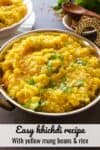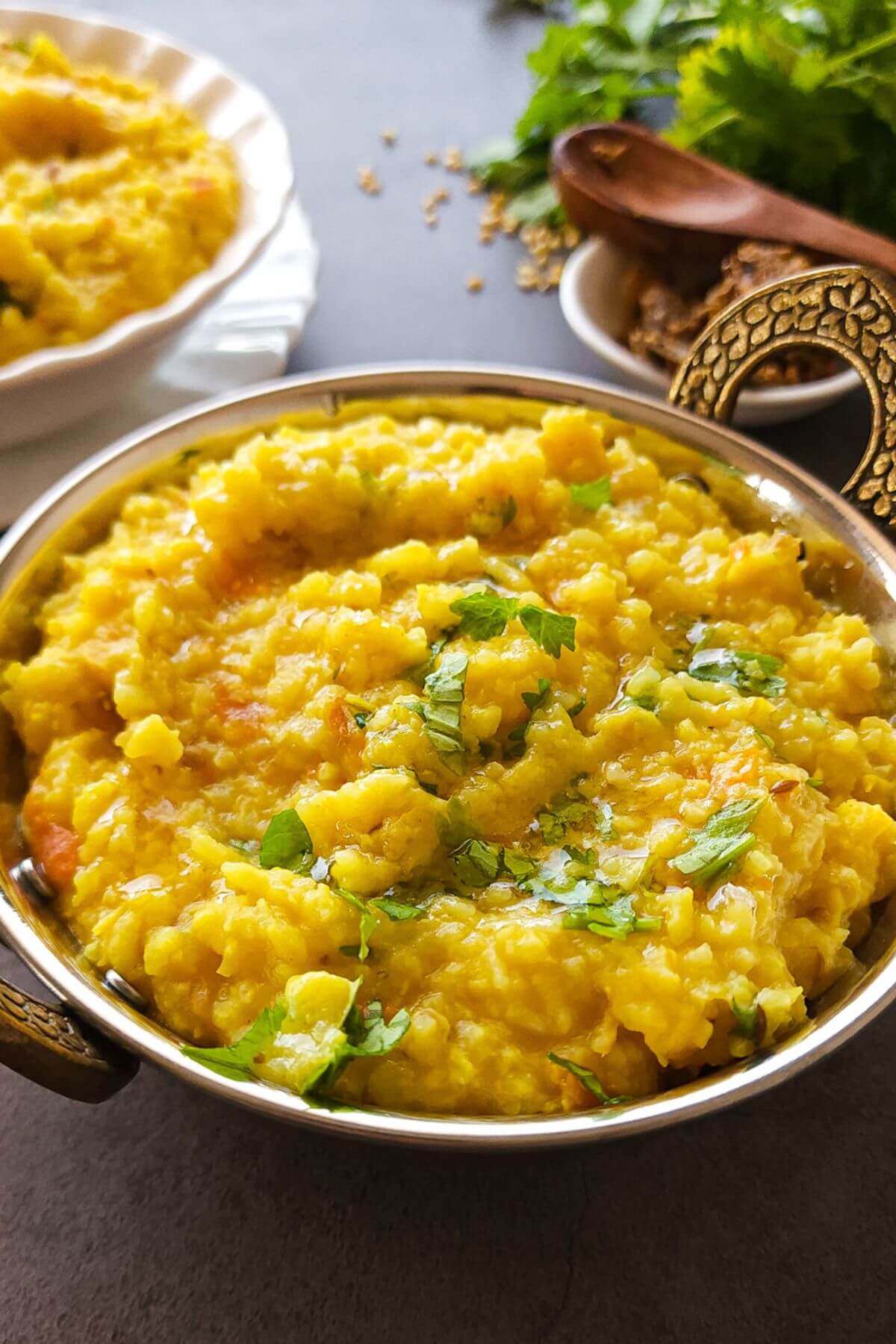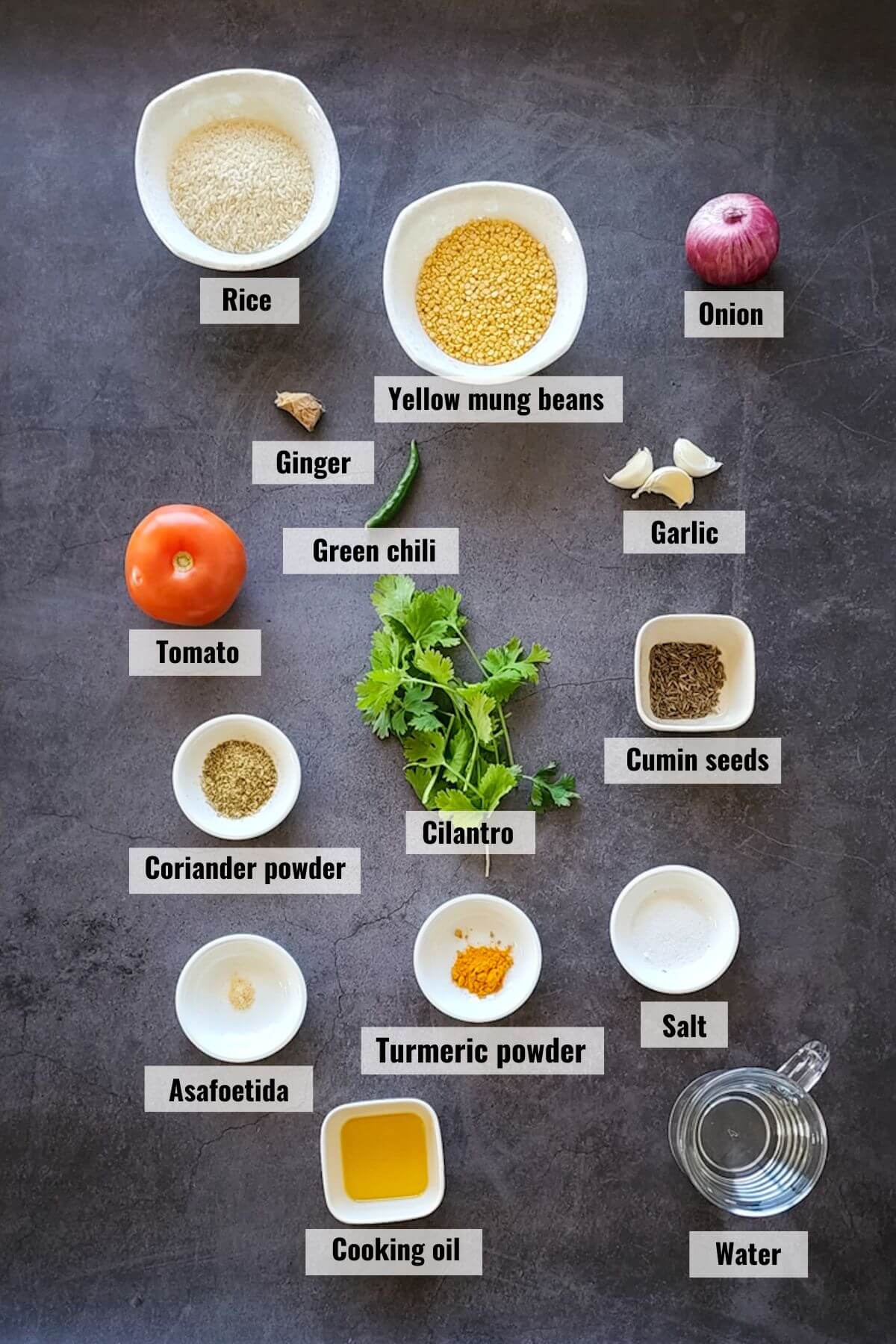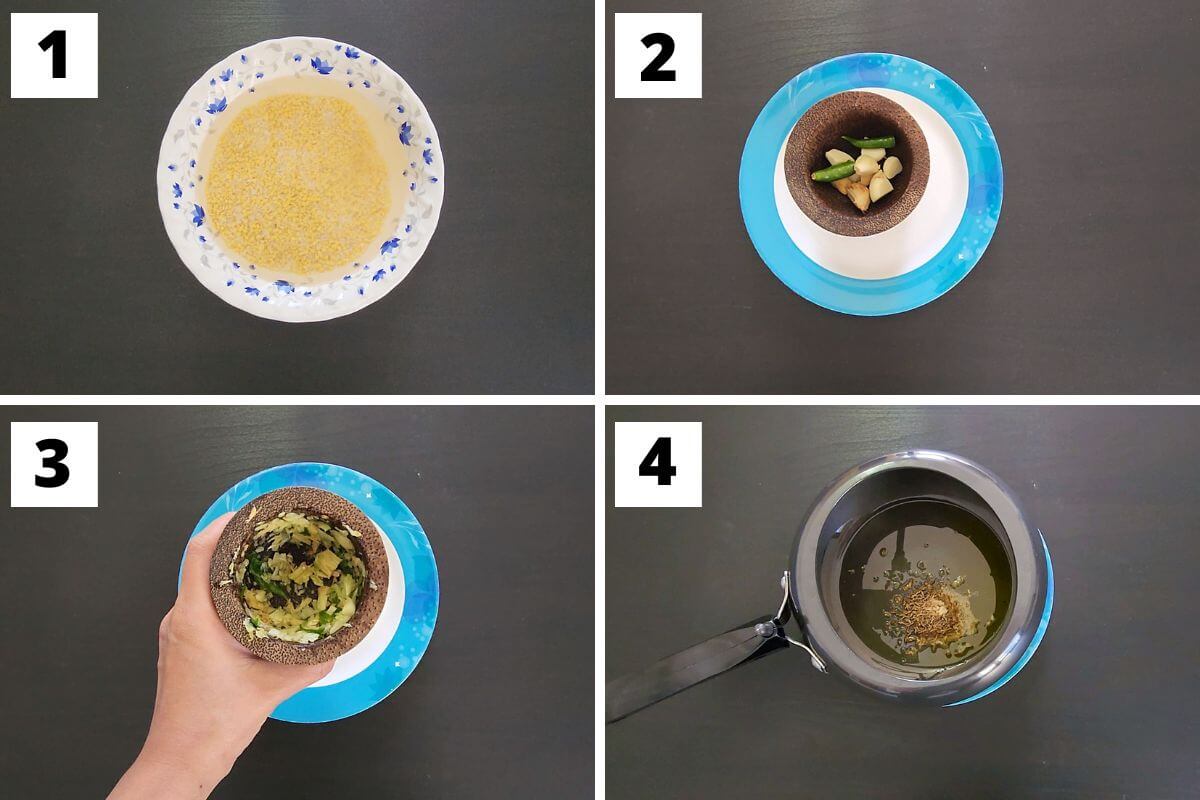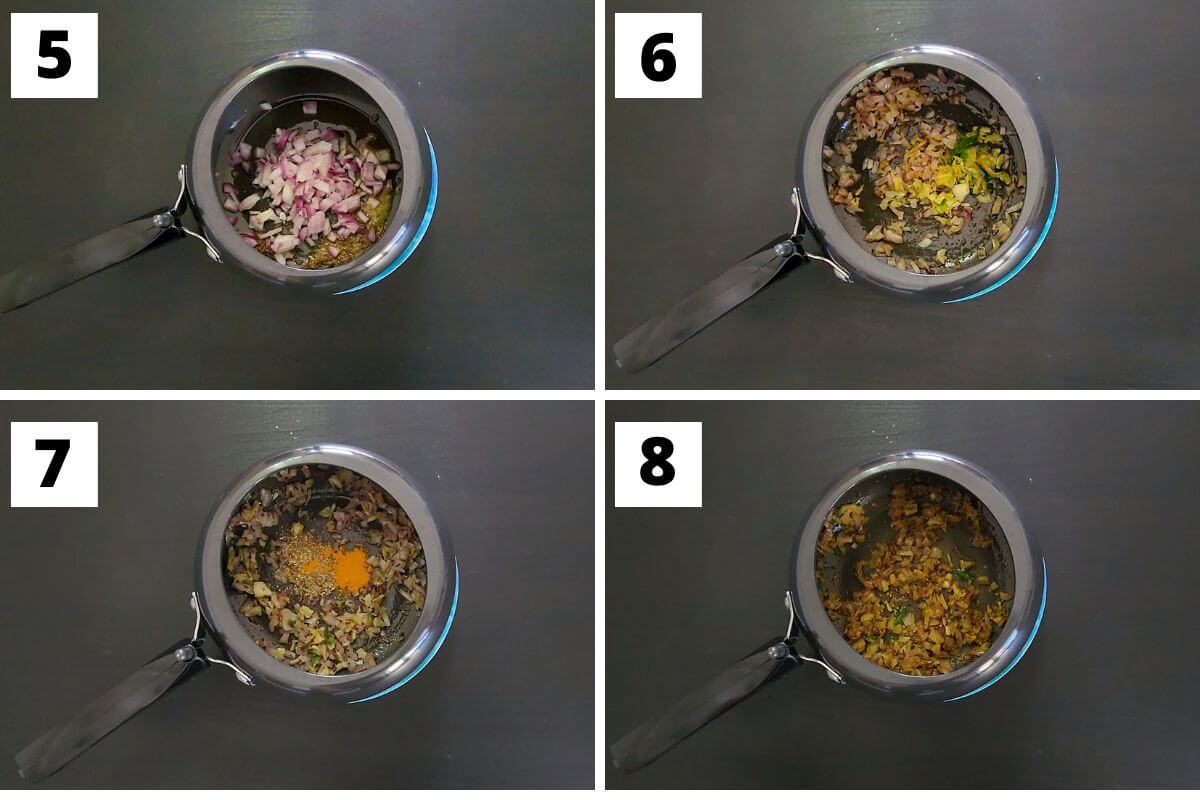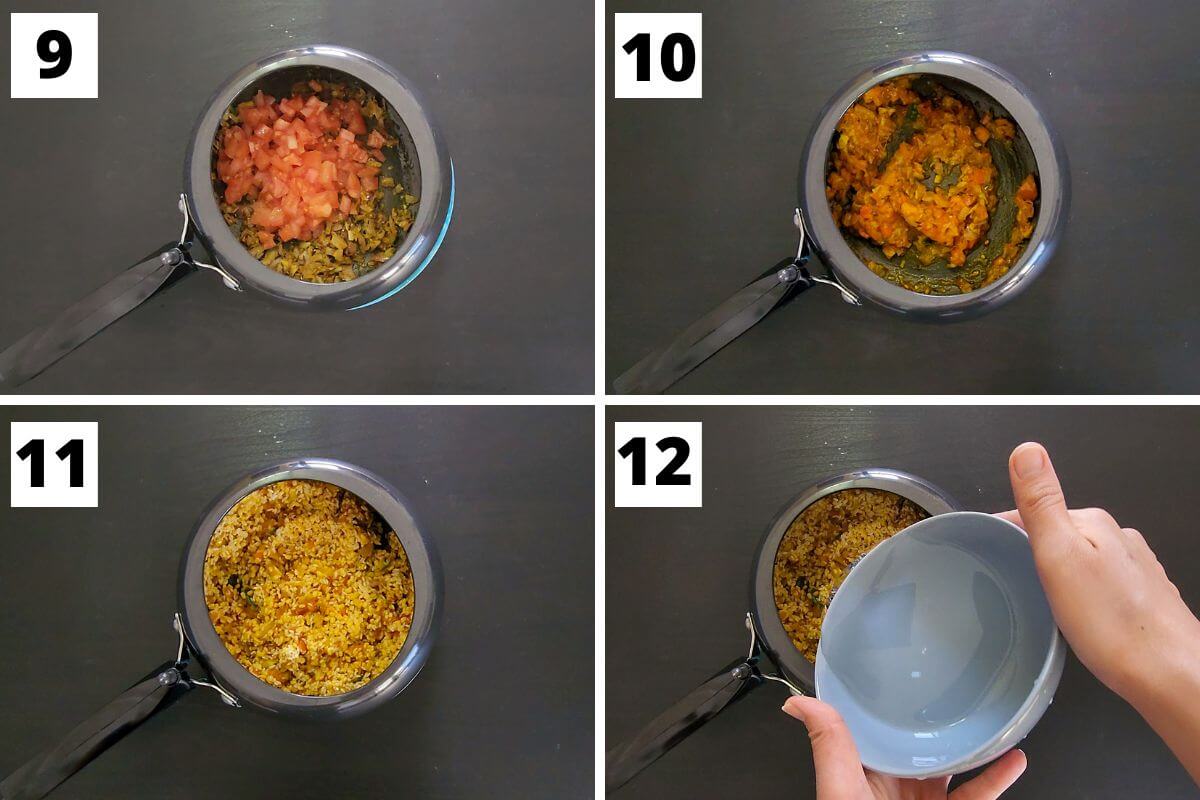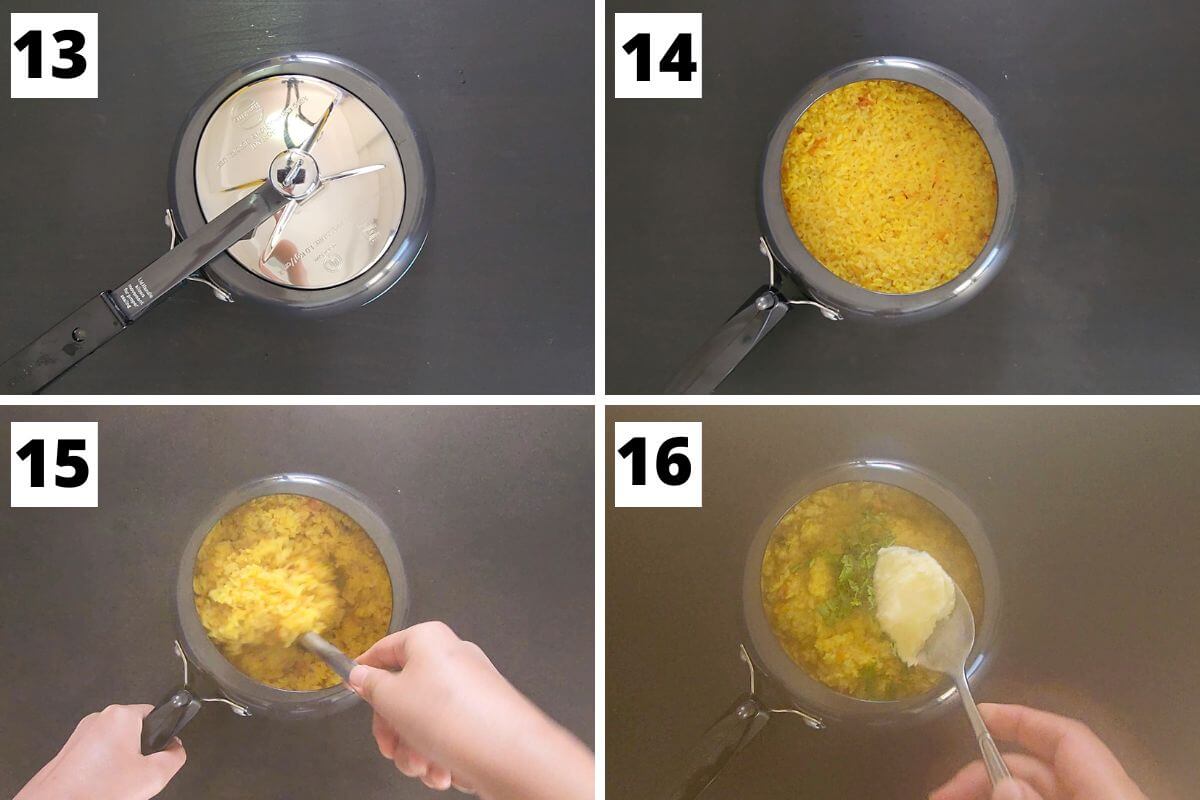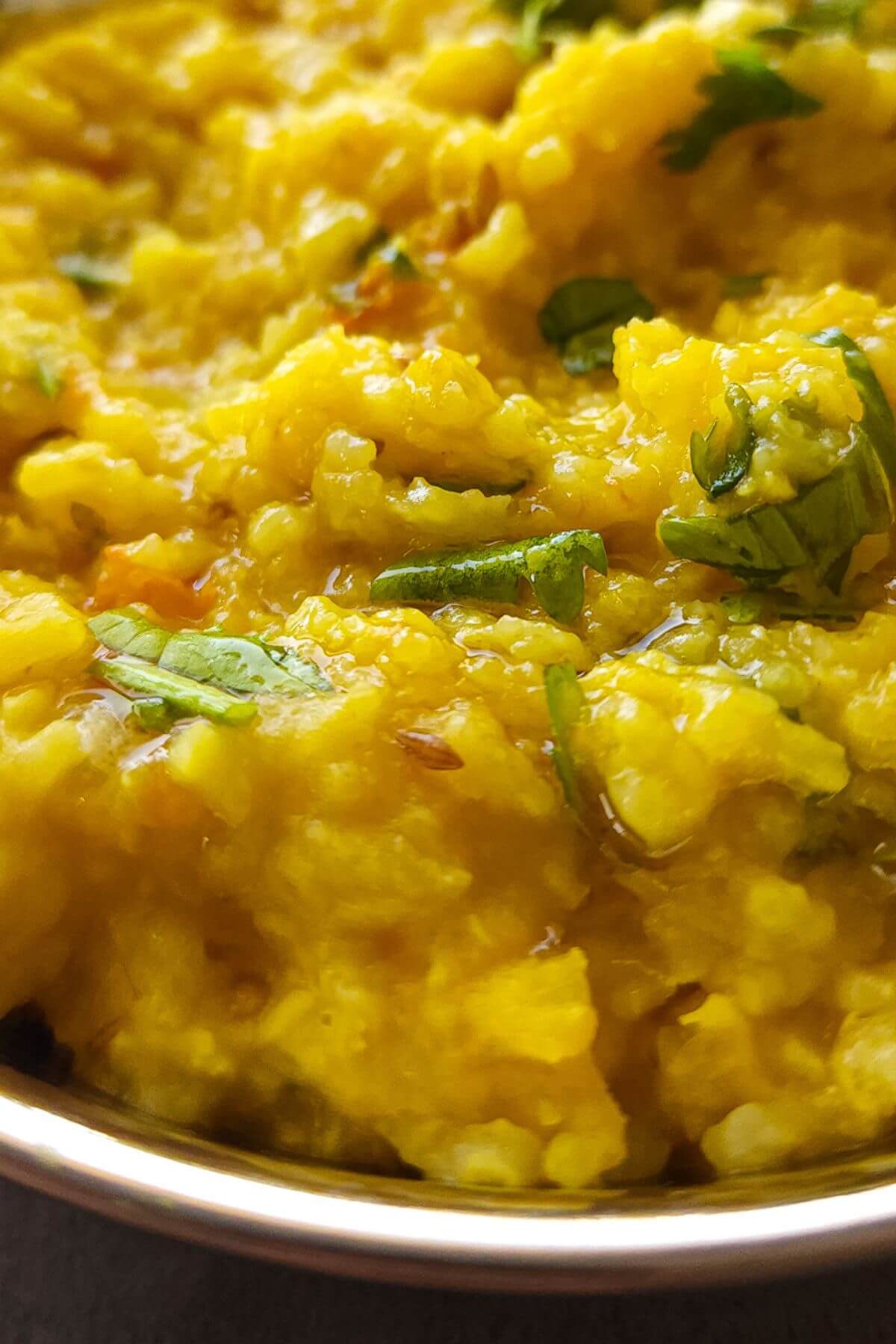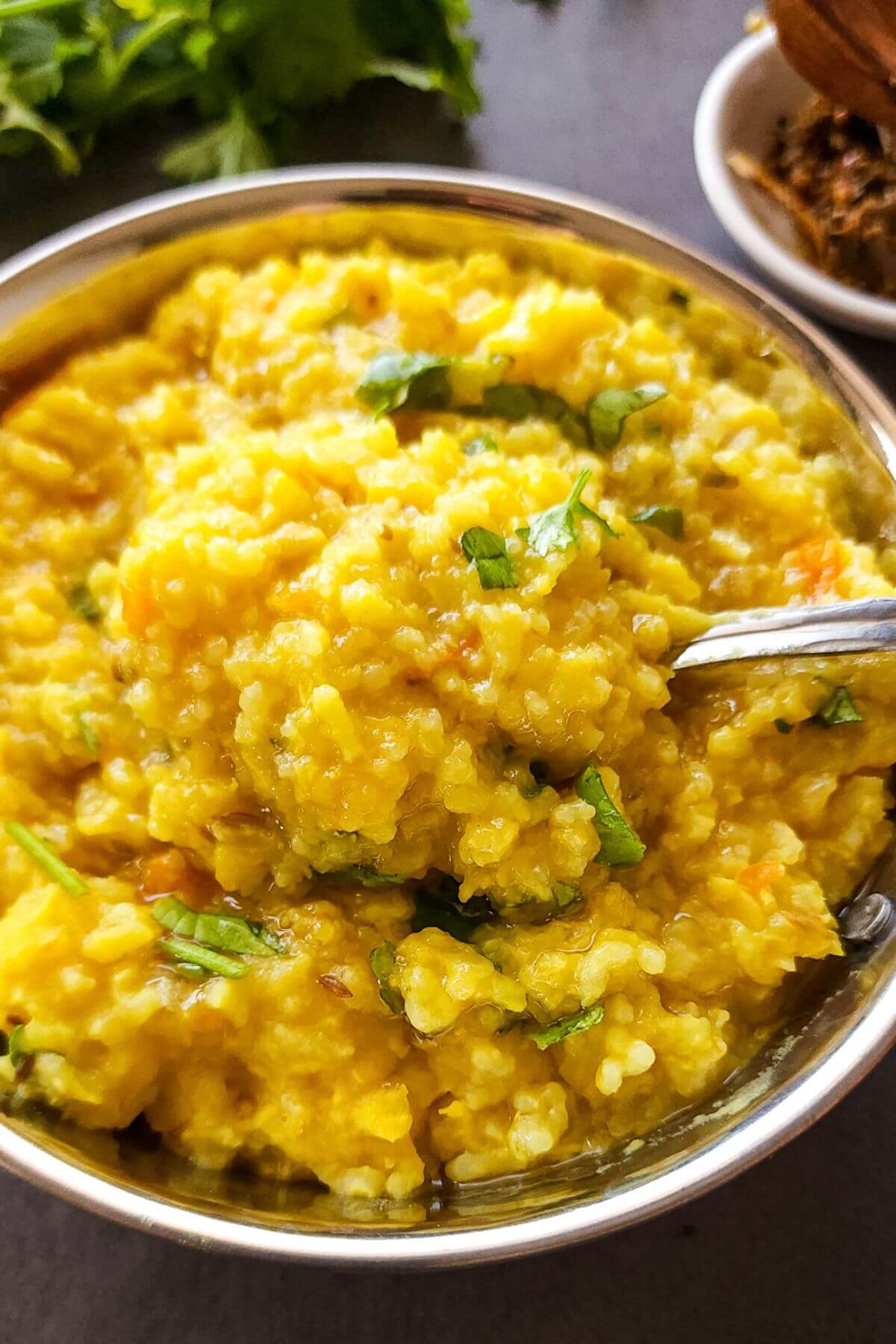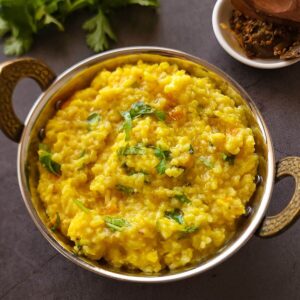This dish is so comforting and tasty that many travelers from History like Ibn Batuta of Morocco, Afanasiy Nikitin from Russia, and Greek King Seleucus mentioned Khichdi in their writings. Khichdi is a comfort food for a lot of Indians and it’s also the first semi-solid food that most Indian babies taste. This is also the most common food that Indian mothers give to their kids when they fall sick. There are different ways of making khichdi and here I am sharing the most basic and common recipe of khichdi called moong dal khichdi which is made with yellow mung beans (moong dal) and rice.
What is Khichdi?
Khichdi is a one-pot meal recipe from the Indian subcontinent which is made by cooking rice or some other grains like bajra (pearl millet), lentils, and sometimes vegetables together over low heat until everything blends well. The dish is mildly flavored with some very basic Indian spices. It’s believed that the National Dish of Egypt Koshari was also inspired by Khichdi. Even doctors and nutritionists in India suggest eating Khichdi to people having digestion-related ailments or those who are on a weight loss journey. You can make khichdi with different lentils like this Toor dal khichdi that’s made with split pigeon peas and rice. Or, use quinoa instead of rice as I have done in this quinoa khichdi recipe.
The ratio of lentils and rice in Khichdi
Different people use different ratios of lentils and rice in Khichdi. You can also change the ratio to your liking.
Ingredient notes
Rice: Use a variety of rice with short or medium-sized grains. I prefer using sona masoori or broken basmati rice for khichdi. Broken rice releases more starch giving khichdi the perfect consistency. Yellow mung beans: Also known as dhuli moong dal or yellow moong dal in India. Though other lentils are also used to make khichdi the one made with yellow mung beans is the most common one. Coriander powder: It’s the ground form of dried coriander seeds and is used as a spice in many Indian recipes. Asafoetida: Also known as hing in Hindi, it’s the dried form of a gum resin of ferula plant. It’s used as a spice as well as a medicine in ayurveda. Asafoetida has an extremely strong flavor and aroma so only a pinch of this spice is used in recipes. Cooking oil: Use any neutral-flavored cooking oil or ghee (clarified butter) to make this recipe.
Other ingredient details and nutritional information are given in the recipe card ahead. I prefer using equal portions of lentils and rice. However, if I want to make a low-carb Khichdi, I either use a low-carb grain or just increase the portion of lentils.
How to make (step-by-step process)?
To make khichdi with moong dal, just follow the easy step-by-step instructions given below: Step 1: Rinse lentils and rice. Soak them in water for at least 15 minutes or while you do the other preparation for khichdi. Step 2: Put roughly chopped ginger, garlic, and green chilies in a mortar. Step 3: Crush them with the pestle to make a coarse paste. Keep the paste aside. Step 4: Heat oil in a pressure cooker. Add cumin seeds and asafoetida. Saute for a few seconds. Step 5: Add chopped onion and cook until it turns translucent. Step 6: Add ginger garlic paste and saute for a few seconds. Step 7: Add coriander powder and turmeric powder. Step 8: Saute for a few seconds. Step 9: Add chopped tomato and salt. Step 10: Cook for 3-4 minutes or until the tomatoes turn mushy. Step 11: Add rinsed rice and lentils. Saute for a minute. Step 12: Add water. Step 13: Mix everything and put on the lid of the pressure cooker. Step 14: Cook on a medium flame till 3 whistles and then switch off the stove. Allow the pressure to get released naturally and then open the lid. Step 15: Mix everything. Step 16: Add chopped cilantro and a dollop of ghee. Mix. Your wholesome yellow moong dal khichdi is ready to be enjoyed!
How to serve?
There is a saying about the side dishes served with Khichdi – Khichdi tere chaar yaar - dahi, mooli, ghee, achaar. It means Khichdi has four friends – yogurt, radish, clarified butter(ghee), and pickle. So it’s mostly served with them. If you don’t have radish, you can also serve it with thinly sliced onions or any other salad like Kachumber Salad or lachha pyaz. We also serve it with toasted papadum on the side. It can also be enjoyed just like that but adding a spoonful of ghee to a bowl of hot Khichdi, takes it to a different level. And, most people eat it like that. Always serve it hot.
Can it be made in advance?
Yes, you can make it in advance. To store, allow to reach room temperature then transfer to an airtight container and refrigerate for 2-3 days. It will become thick if left in the fridge so while reheating add some boiling hot water and salt. Reheat either on the stovetop or in a microwave until evenly heated. Keep stirring in between.
Recipe tips, tricks, and variation suggestions
Always use small or medium-sized rice grains to make Khichdi. You can also add vegetables like green peas, spinach, carrot, and cauliflower to make it even more nutritious. If your khichdi has come out too thick and you prefer khichdi with a thinner consistency, add more hot water and cook for a few more minutes without putting on the lid of the pressure cooker. For a low-carb khichdi, add more lentils and less rice.
Frequently asked questions
More mung bean recipes
Mung bean has a lot of health benefits so you should make it a regular part of your diet. If you are looking for ideas to use mung beans in your recipes then don’t miss to check the following recipes: If you liked this recipe, please leave a star rating ⭐⭐⭐⭐⭐ in the recipe card below. You can also follow me on Instagram, Youtube, and Pinterest.
Recipe
